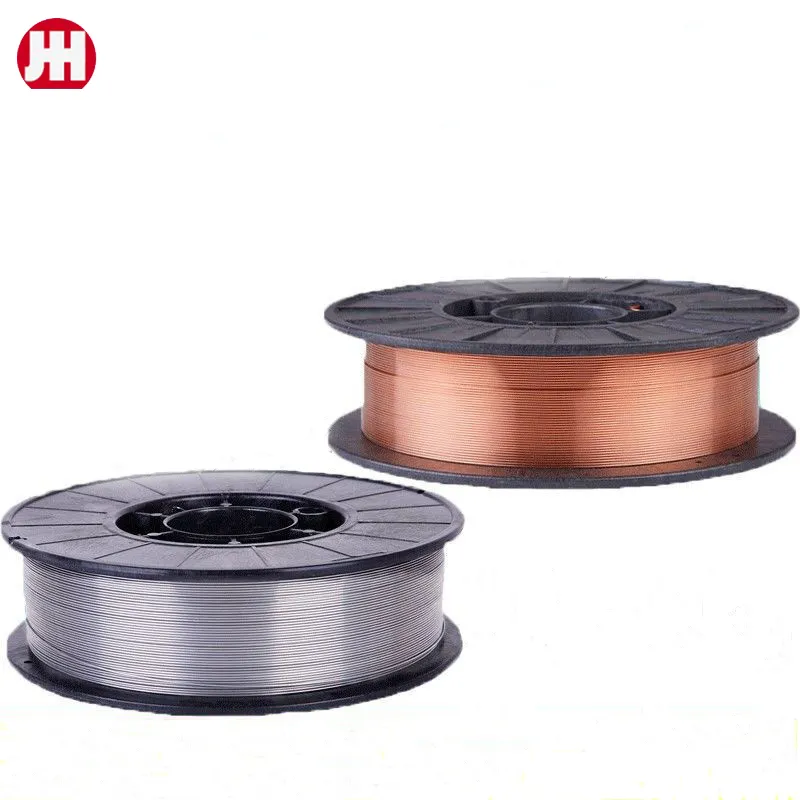Advanced Welding Solutions with Flux Cored Welding Wire
In the realm of welding technology, flux cored welding wire has established itself as a versatile and efficient consumable, catering to a wide range of materials and industrial needs. Whether welding lightweight aluminum structures, robust stainless steel components, or performing specialized tasks with wires like the 035 флюсті дәнекерлеу сымы, choosing the right flux core wire significantly impacts weld quality, productivity, and durability. This article explores the distinctive properties and applications of various flux core wires, including flux core aluminum welding wire and stainless steel flux core welding wire, helping professionals select the ideal solution for their welding challenges.

Unveiling the Benefits of Flux Core Aluminum Welding Wire
The flux core aluminum welding wire is engineered to address the challenges inherent in welding aluminum, a material known for its high thermal conductivity and oxide layer formation. This wire combines a flux-filled core with aluminum sheath, allowing welders to achieve superior penetration and cleaner welds without relying solely on external shielding gases.
Compared to solid aluminum wire, the flux core aluminum welding wire offers better tolerance to contamination and porosity, common issues due to aluminum's reactivity. It enables welding in outdoor or drafty conditions where shielding gas might dissipate, maintaining arc stability and bead quality.
This wire is widely used in automotive manufacturing, aerospace, and construction sectors where aluminum's lightweight properties are essential. Its ability to produce smooth, strong welds with reduced post-weld cleaning enhances operational efficiency and reduces costs.
Exploring the Versatility of 035 Flux Core Welding Wire
The 035 флюсті дәнекерлеу сымы refers to a wire with a diameter of 0.035 inches (approximately 0.9 mm), a popular choice for many flux core applications. Its slim profile offers excellent precision and control, making it ideal for thinner metals and projects requiring detailed welds.
Due to its size, the 035 флюсті дәнекерлеу сымы supports smoother feeding and reduced spatter, which results in cleaner welds and less time spent on finishing. It is highly compatible with semi-automatic welding machines and provides consistent arc stability.
This wire is extensively utilized in fabrication, automotive repair, and maintenance industries. Its balanced performance in penetration and bead appearance makes it suitable for both beginners and experienced welders aiming for high-quality results on light to medium gauge metals.
Superior Strength and Corrosion Resistance with Stainless Steel Flux Core Welding Wire
When welding stainless steel, the choice of consumable dramatically affects corrosion resistance and mechanical properties of the joint. The stainless steel flux core welding wire offers a flux-filled electrode designed to deliver welds with excellent toughness, ductility, and chemical resistance.
This wire maintains a stable arc while providing shielding gases and slag coverage necessary for stainless steel metallurgy. The stainless steel flux core welding wire reduces the risk of weld contamination and distortion, producing aesthetically appealing and structurally sound welds.
Industries such as food processing, chemical plants, and architectural metalwork rely on this wire to meet stringent quality standards. Its ability to perform well in multiple welding positions and under variable conditions adds to its widespread adoption.
Key Features and Applications of Flux Cored Welding Wire
The broader category of flux cored welding wire encompasses self-shielded and gas-shielded variants designed to improve welding efficiency and quality. These wires integrate flux within their core, which generates protective gases and slag during welding to safeguard the molten metal from oxidation and contamination.
This design enables welding in challenging environments where external shielding gas usage is limited or impractical. Flux cored welding wire delivers high deposition rates, strong mechanical properties, and excellent bead finish.
From heavy structural steel fabrication to repair work and shipbuilding, flux cored welding wire provides a reliable and cost-effective solution. Its adaptability across different metals and welding positions makes it a staple in professional welding workshops.
Flux Cored Welding Wire FAQs
What makes flux core aluminum welding wire different from solid aluminum wire?
The flux core aluminum welding wire contains a flux-filled core that produces shielding gases and slag during welding, improving arc stability and reducing porosity. Unlike solid aluminum wire, it performs better in outdoor or drafty environments without relying entirely on external shielding gas.
What are the advantages of using 035 flux core welding wire?
The 035 флюсті дәнекерлеу сымы offers finer control, reduced spatter, and smoother feeding due to its smaller diameter. It is ideal for welding thinner metals and producing clean, precise welds with less post-weld cleanup.
How does stainless steel flux core welding wire enhance corrosion resistance?
The stainless steel flux core welding wire provides appropriate alloying elements and shielding gases from the flux to protect the weld pool, maintaining stainless steel’s corrosion resistance and mechanical integrity. It reduces contamination risks and distortion during welding.
Can flux cored welding wire be used without external shielding gas?
Yes, self-shielded flux cored welding wire variants are designed to operate without external shielding gas, generating their own protective gases and slag. This makes them suitable for outdoor and windy conditions where gas shielding is impractical.
Which industries commonly use flux cored welding wire?
Industries such as shipbuilding, construction, automotive repair, heavy machinery fabrication, and aerospace commonly use flux cored welding wire due to its versatility, high deposition rates, and ability to weld in various positions and environments.
-
What is a medium-frequency pulse? What types of welding are suitable for?ЖаңалықтарNov.24,2025
-
Why is the overall cost of CO2 welding lower than that of shielded metal arc welding?ЖаңалықтарNov.21,2025
-
Welding Knowledge 6ЖаңалықтарNov.20,2025
-
What is a low-frequency pulse? What types of welding are they suitable for?ЖаңалықтарNov.19,2025
-
Why are the weld joints from CO₂ gas shielded welding of such high quality?ЖаңалықтарNov.18,2025
-
J506 Welding Rod - Low Hydrogen, All-Position, AC/DC E7016ЖаңалықтарNov.17,2025


